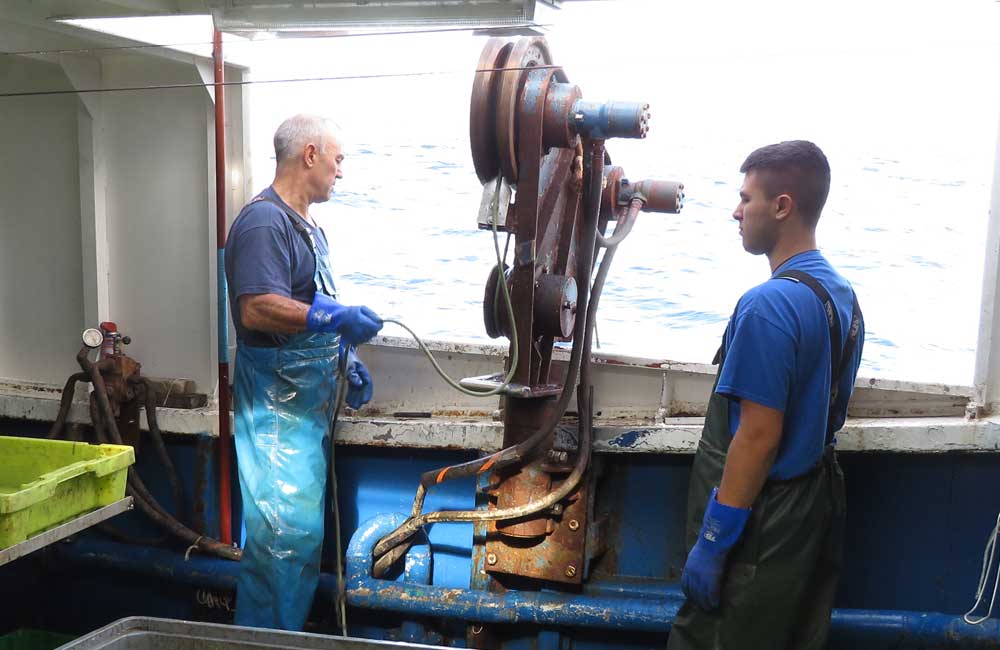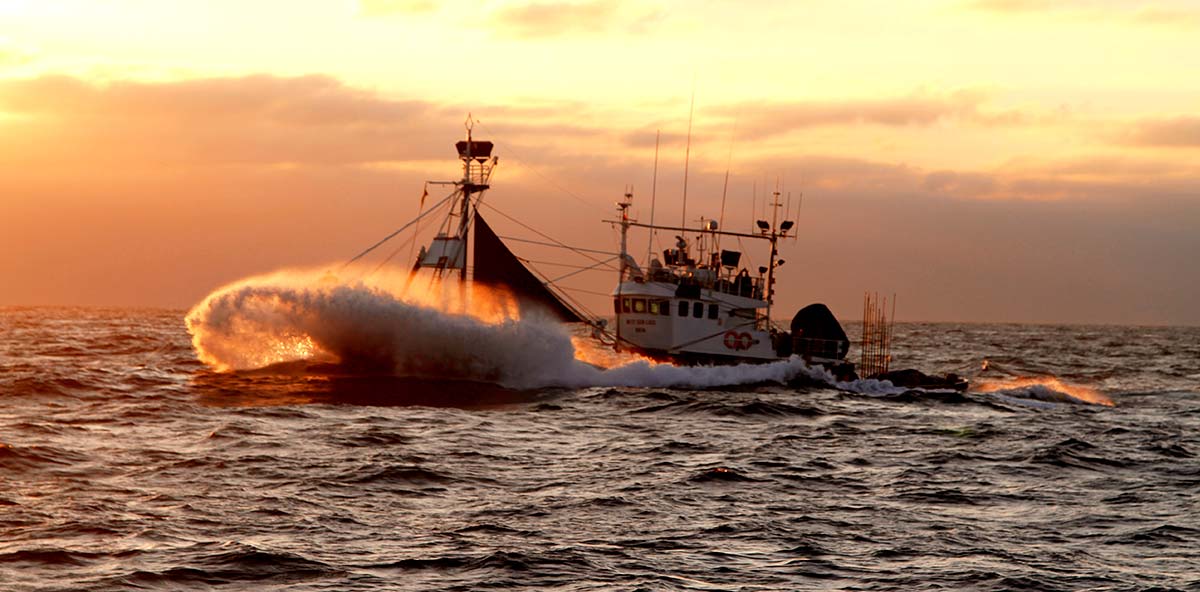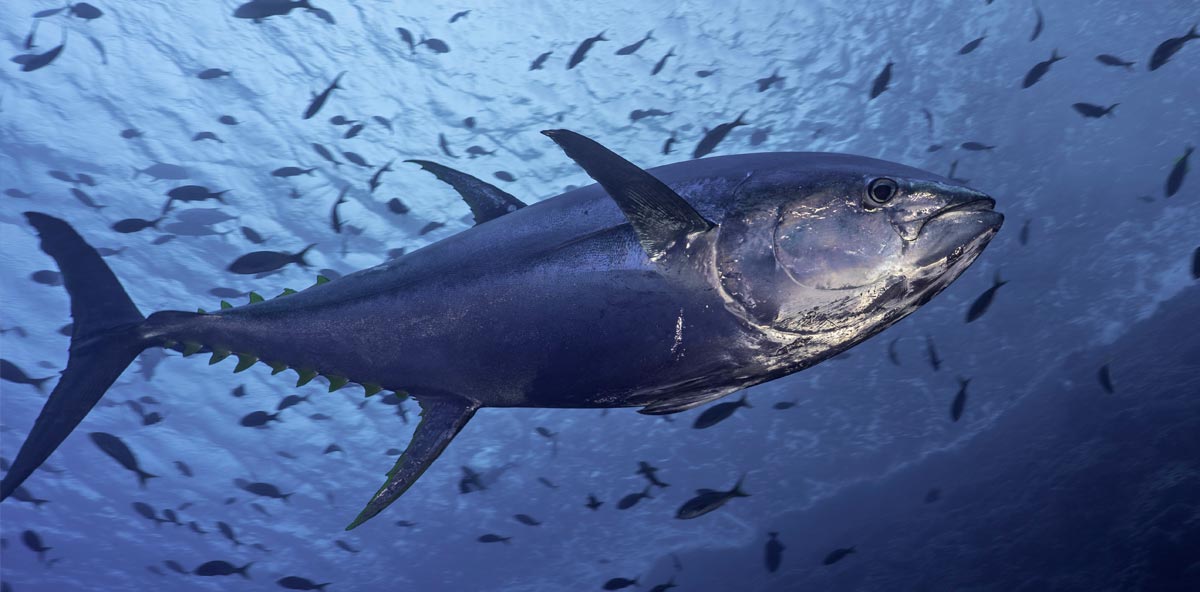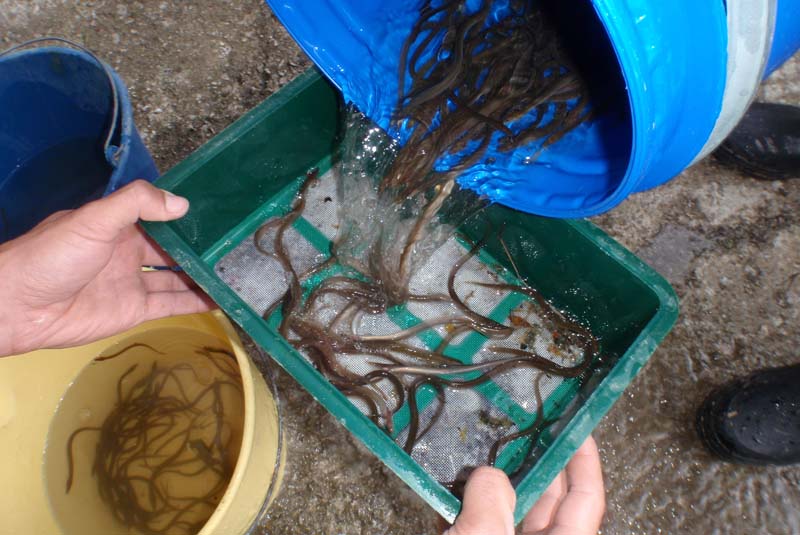PALPROF
Deep-sea longline campaign to estimate the abundance of sharks and other species.

Context
Most scientific surveys for the study of fishery biology and stocks are based on sampling with trawl gear. However, in many areas trawling is not possible; either because the bottoms are rocky or because the survey takes place in protected areas with bottom species such as coral reefs that are sensitive to fishing gear. There are also species that are rarely caught by trawls, so in these cases longlines may be considered more suitable for reliable estimation of the abundance and biodiversity of fish populations and/or stock status.
Main objective
The overall objective of the PALPROF project is to generate indices of abundance for stock assessments and to obtain information on the habitats and diversity of deep-sea species, especially sharks.
Results
a) Obtaining maps of horizontal and vertical spatial distribution of deep-sea species;
b) Generation of biodiversity indices and other environmental indicators required by DCF, DMEM, and OSPAR;
c) Generation and improvement of information on stock identification, habitat mapping, and monitoring of the effects of pollutants.
Advantages of longline surveys
One of the main advantages of longline surveys is their ability to quantify catch and effort in an easily replicable way, and that the gear can be used on different bottom types, including rocky ones. Trawls are effective down to depths of approximately 2000 m, while longlines can be used at depths of up to 8000 m. In addition, longlines can provide a high degree of catch and effort data. In addition, longlines can provide more accurate information on the location and depth of species and are more respectful of bottom ecosystems.
Campaign achievements
The deep longline campaign proposed by AZTI, the first to be carried out in continental European waters, serves as a trial and methodological basis for a possible international deep longline campaign in southern European waters.
The PALPROF campaign is currently recognised as a research activity (scientific campaign) within the Spanish work plan for the collection of fisheries data (section 13.1). As such, this campaign reinforces the data collection system for biological, environmental, technical and socio-economic variables: assessing the state of exploited marine biological resources and ecosystems, level of fishing and impact of fishing activities and the socio-economic results of fishing and aquaculture.
It provides information to managers to ensure that the exploitation of living marine biological resources is maintained at the expected levels. Its inclusion as a national reference campaign reinforces participation in decision-making, advisory and assessment groups for species for which Spain and/or the EU is a contracting party or observer. In this sense, the campaign was included in 2020 as a reference index for stock assessment in the ICES Working Group of Elasmobrach Fishes (WGEF), which will serve from this year onwards to complete the scientific information available to issue scientific advice on the exploitation of deep-sea shark stocks.
- The PALPROF campaign has been included as a mandatory campaign for 2022 -2027 in the EUMAP review.
- Since 2019 it is included in the ICES campaign database (although not part of DATRAS).
- With a historical series of 7 years, it will be taken into account in the ICES advice for the stocks that are caught in it.
- The following scientific article has been published: Diez G, Arregi L, Basterretxea M, Cuende E, Oyarzabal I (2021). Preliminary observations on abundance and distribution of fish fauna in a canyon of the Bay of Biscay (ICES Division 8c) .Journal of the Marine Biological Association of the United Kingdom101, 169-178. https://doi.org/10.1017/S0025315420001265. As a result of the first 5 years of the campaign and as a basis for the inclusion of the campaign in the species assessment and harvest council.
- During 2022, it is expected that the campaign will continue to provide useful information and data for the scientific assessment of deep-sea species stocks from a fishery-ecosystem approach.
Useful documentation
| Lenght |
Annual since 2015 |
| Funding |
Eusko Jaurlaritza – Basque Government through the European Maritime, Fisheries and Aquaculture Fund |









